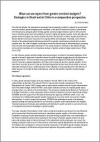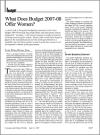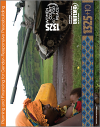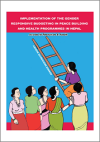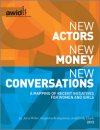FOUND 160
What if budgets could help us revisit the shortcomings of mainstreaming by providing more concrete and measurable instruments? This article intends to contribute to this debate through some practical examples and a comparative analysis of gender sensitive budget experiences in Brazil and in Chile.
This article takes a closer look at the gender budgeting statement in the Union Budget 2007-08 in India and reveals that programmes and allocations remain plagued by mistakes, with several schemes wrongly prioritised as being exclusively for women. Economic and Political Weekly April 21, 2007
This review of current patterns of planning and funding in post-conflict settings reveals a persistent gender bias, in which women's needs and issues are systematically underfunded.
This book aims to contribute to the evolving understanding of public expenditure management as a political, rather than a purely technical, process. In particular, it explores the ways in which a rights approach can contribute to strengthening pro-poor voice and outcomes in budget processes.
This note provides an overview of existing gender equality markers and reviews issues relating to the tracking and monitoring of investments related to gender equality and women’s empowerment.
This toolkit follows the transfer of public funds from central to local governments until they reach users such as schools and clinics. It explains how a public expenditure tracking system operates and how it can benefit marginalized groups.
The guidance note sets out commom principles and standards for gender equality markers systems that track and report on allocations and expenditures for gender equality and women's empowerment.
This publication is a compilation of two studies carried out to assess GRB in the peacebuilding and Health programmes under the EC/UN Women partnership programme on 'Integrating GRB into the Aid Effectiveness Agenda'.
The ITC/ILO gender marker is a one-digit code (on a 0 to 3 scale) used by ITC to assess ;whether or not ITC/ILO ;training activities are designed in a gender-sensitive way in order to address the needs of women and men as ultimate beneficiaries of development actions.The application of the marker i
The third report in a new research series on resources for women's rights organizing from the Association for Women's Rights in Development, this publication presents the results of our mapping of new donors making major commitments to work with "women and girls", to better understand this trend and
